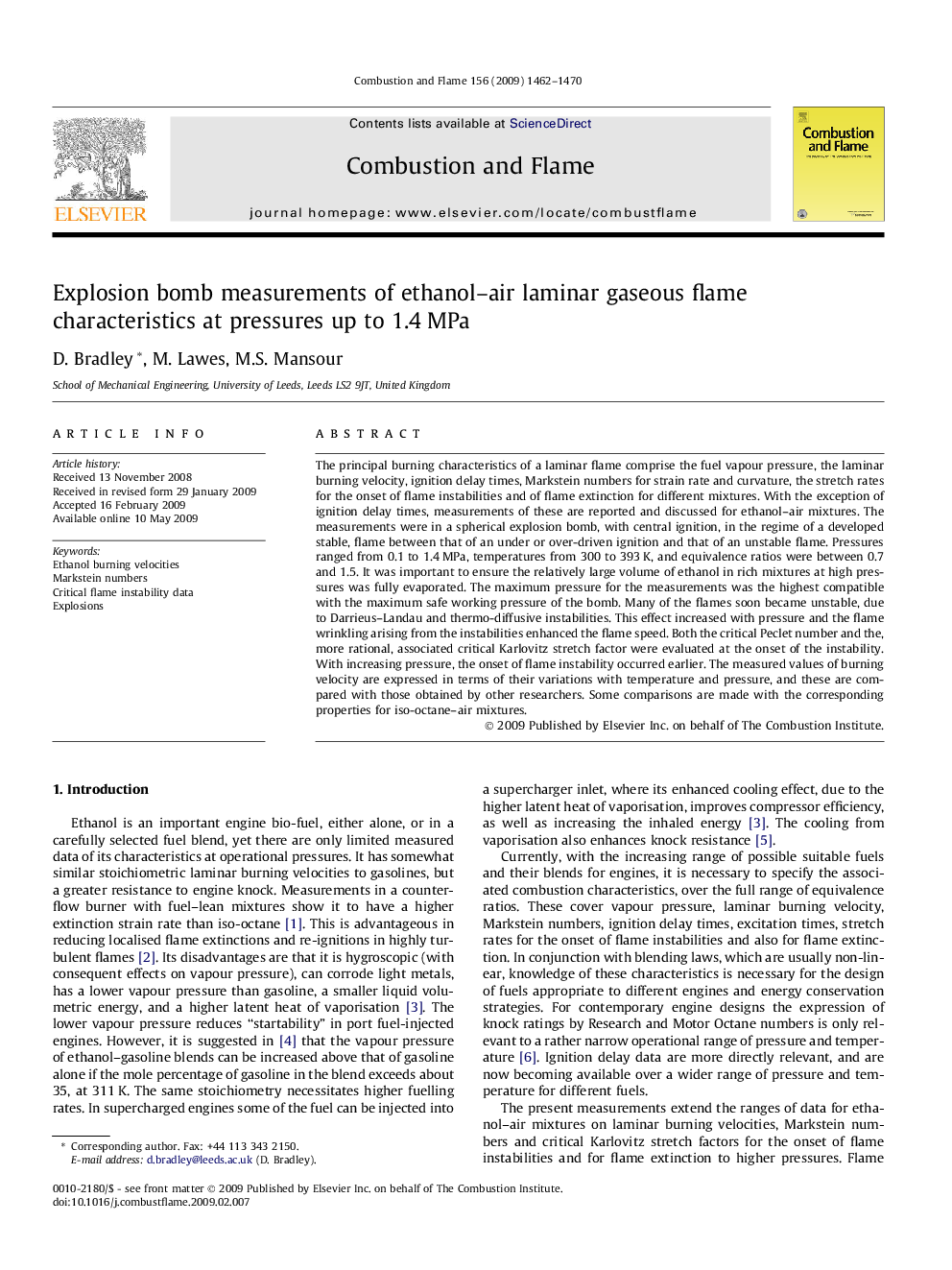| Article ID | Journal | Published Year | Pages | File Type |
|---|---|---|---|---|
| 166925 | Combustion and Flame | 2009 | 9 Pages |
The principal burning characteristics of a laminar flame comprise the fuel vapour pressure, the laminar burning velocity, ignition delay times, Markstein numbers for strain rate and curvature, the stretch rates for the onset of flame instabilities and of flame extinction for different mixtures. With the exception of ignition delay times, measurements of these are reported and discussed for ethanol–air mixtures. The measurements were in a spherical explosion bomb, with central ignition, in the regime of a developed stable, flame between that of an under or over-driven ignition and that of an unstable flame. Pressures ranged from 0.1 to 1.4 MPa, temperatures from 300 to 393 K, and equivalence ratios were between 0.7 and 1.5. It was important to ensure the relatively large volume of ethanol in rich mixtures at high pressures was fully evaporated. The maximum pressure for the measurements was the highest compatible with the maximum safe working pressure of the bomb. Many of the flames soon became unstable, due to Darrieus–Landau and thermo-diffusive instabilities. This effect increased with pressure and the flame wrinkling arising from the instabilities enhanced the flame speed. Both the critical Peclet number and the, more rational, associated critical Karlovitz stretch factor were evaluated at the onset of the instability. With increasing pressure, the onset of flame instability occurred earlier. The measured values of burning velocity are expressed in terms of their variations with temperature and pressure, and these are compared with those obtained by other researchers. Some comparisons are made with the corresponding properties for iso-octane–air mixtures.
